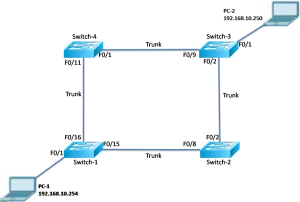Network Redundancy Revolutionized: Achieve 99.999% Uptime
Network redundancy ensures high availability and reliability in modern networks by providing alternate paths for data transmission, allowing seamless failover if a link or device fails. In CCNA/CCNP contexts, it shares traffic loads, boosts capacity, and employs protocols like Spanning Tree Protocol (STP) for Layer 2 loop prevention, or First Hop Redundancy Protocols (FHRP) like […]

